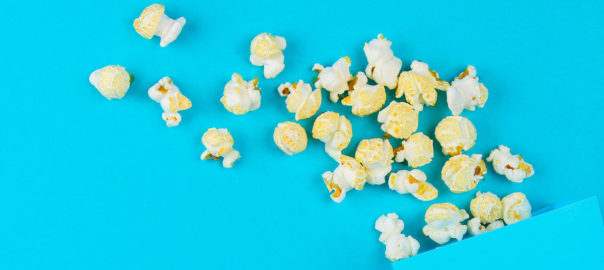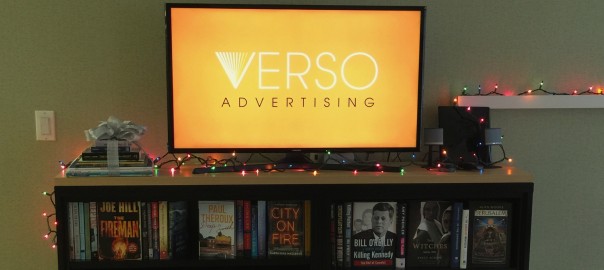|

|

|

|

The Standard Advertising Units are meeting new standards, as the IAB releases its new portfolio of Flexible Ad Units, including Virtual Reality, Augmented Reality, and other formats, spanning the latest in social media, mobile video (vertical! 360-degree!) and even emoji.
The biggest change is from fixed pixel sizes to aspect ratios. This may not be a big deal this week, but like the transition from Flash to HTML5 it will be changing our lives very soon.
MediaRadar says more native is being purchased while programmatic spending is down.
This is partly due to brand safety concerns but performance plays in, our own experience suggests.
Print continues to descend – but readers gonna read. It’s not dead yet, especially among the kinds of readers who buy hardcovers.
A fuller look at ad spends this quarter HERE
Giving the people what they didn’t know they wanted.
“It requires a lot of tracking resources, which is not an easy thing to do, but success on the web is not easy either.”
Help them to be watched still more.
Takeaways: Know what your audience knows and use that to tell a story they’ll relate to. (Bonus: spend lots of money.)
Application: Utilize comps, fonts, art, and language to build familiarity, and if possible subvert the viewer’s expectations in a rewarding (amusing) way.

A few words — or even a few dots — can make a big difference. Compliments of a PAMA Facebook post, BookBub’s 8 Book Description A/B Tests You Need to See …
Emma Watson and the Station of Secrets.
Watch:
Find out how the podcast boom can favor and disfavor diversity in this Columbia Journalism Review article.
Also check out:
10 great podcasts to diversify your listening lineup
Programmatic is like a planet. We live on the thin surface layer but most of the hot stuff is under the surface.
“Facebook just executed what might best be described as a digital advertising coup against rival Google and its DoubleClick empire” by letting publishers use header bidding technology. This could raise ad costs but increase yield, says AdAge.
Drill a hole and peek into the Magma
Or simply find out:

“Until last year, advertisers mostly accepted Facebook’s metrics with closed eyes. However, after admissions that a portion of its ad numbers were being misreported, all hell broke loose.”
Flipboard’s new app is getting noticed. “Rejecting robo-driven ‘programmatic’ advertising [and] using humans to sell premium-priced slots for magazine-style ad campaigns from upscale brands.”
Subversive branding coup? Or an extravagant waste?
A story on firewalls that makes us think about ads on opt-in environments. CPMs may be higher but users truly value the content.

Not always. Here are 6 tips from Facebook for making silent videos speak.
… By year’s end, 75% of online content consumption will be mobile.”
Something to bear in mind when reviewing our ad stats, which often average mobile and desktop together. (Not all CTRs are created equal.)
Tune in to Programmatic with Point 3. A tool to remember as we plan our campaigns.
Maybe that’s a good idea … but maybe not.

These are dark days in America—yet there remain sources of light. You might wonder if that’s a comment on the state of our polarized political discourse and the role books can play in revitalizing our national conversation. Maybe. Maybe not. But it is definitely a comment on the days getting shorter as we approach the first day of winter and raise a glass to the holiday season. Here are some highlights of news we’ve noted this week, shared here as part of our effort to stay on top of current trends and best practices.
The good news is that the programmatic community continues to make headway in combatting ad fraud. The bad news is that is likely to mean a 20% increase in costs. Even with a 20% increase, however, programmatic remains a highly efficient way to reach book readers. Weeding out bad ad impressions is definitely worth a slight increase in CPM. In a separate post, Digiday published five charts that indicate the global outlook for programmatic. Related: you can now gain access to some influencer marketing through programmatic channels.
The 2016 presidential election has created a firestorm around the question of “fake news.” Many are pointing to paid content distribution systems such as Taboola as a major culprit in a world-wide epidemic. Here is Taboola’s thoughtful response. Let’s hope they back it up with action.
In a move that echoes the creation of companies like Fusion and Mic, CNN has hired YouTube star and entrepreneur Casey Neistat to help make news “relevant” for a new generation.
Persona marketing isn’t used much in book publishing, where we value the particularities of every book and honor the uniqueness of every reader. But we ignore it at our peril: it can be a great way to focus in on the target customer in a way that can be applied and tested across a genre. This ClickZ article shows how to think about persona marketing while still understanding that no one reader is exactly identical to another.
Digiday takes a look at the highly public practice of influencer marketing: who’s doing it, how they’re paying for it, and does it work?
Photo (c) 2016 Martha Otis

They were supposed to be the next big thing in advertising: a kind of native advertising you could book and run programmatically. But the New York Times reports that those “Promoted Stories” style ads with rows of photos and links beneath articles are falling out of favor. While we’re fans of native advertising when it’s executed with an authentic voice, real content affinity, and true transparency, we’re not big fans of “native programmatic”—a concept that seems like an oxymoron at best. As readers continue to complain and high end website continue to notice how poorly click-bait headlines look on their pages, we expect to see less of this kind of advertising going forward.
OK, that headline is a little click-baity. Programmatic is livelier than ever, responsible for as much as 89% of overall banner ad buying by some counts. The question is really: has the word “programmatic” out-lived its usefulness? This “Op-Ed” by 360i’s Kolin Kleveno argues that the term is being used so frequently that it’s becoming meaningless. He argues that the true use of the term should point to two factors in a campaign—data-driven and automated—but it’s being bandied about by every ad tech vendor under the sun. That said, even if we limit the term to those two factors,it doesn’t narrow usage down much these days. With everything from applying an optimization algorithm to running ads in emails only when they’re opened, what’s *not* data driven and automated?
Reddit, the online community of communities, is introducing a new ad option that lets advertisers target users by the groups they frequent most. As Reddit is a passionate community, this is a great way to target users by interest. Because many Reddit users are also outspokenly anti-advertising, the company is wisely providing an “opt-out” option for all users. No advertiser wants to launch their product in the face of someone who would likely turn around and trash the product, just because it’s being advertised to him or her.
http://digiday.com/agencies/op-ed-time-retire-term-programmatic/
A post on eMarketer suggests that listeners still turn to radio for music, followed by owned music, and then by streaming services such as Pandora and Spotify. While radio doesn’t offer the campaign metrics of streaming services, it remains a great way to reach a broad and engaged group of people.
Instagram and Snapchat are the two most popular apps for Millennials and Gen Z. But how do they fare mano a mano? Adweek compares the two based on polling and finds that they’re neck and neck. Instagram doing a little bit better with ad recall, but Snapchat ahead by a nose in quality of features and perceived “coolness.”
#instagram #snapchat #millennials
In print. Just saying.
#slack #apple #microsoft #print
Columbia Journalism Review points to the massive decline in print ad revenue at major papers such as The Wall Street Journal—and how we’re seeing the real effects of those declines now.
photo (c) 2016 Martha Otis

Whether you’re planning on watching the U.S. Open, mourning and celebrating the life of Gene Wilder, or just sitting in traffic trying to make it to the beach, there’s a lot of news to catch up on over Labor Day weekend. Read on.
SPORTS ILLUSTRATED AND FOX NEWS TEAM UP
In an effort to take on sports powerhouse ESPN, Sports Illustrated and Fox News have agreed to an editorial and ad sharing deal across their businesses. According to the WSJ:
“Combined properties operated by Sports Illustrated and Fox Sports brought in about 68 million unique visitors in July, which would make it the second-largest sports publisher behind ESPN, which brought in about 79 million visitors, according to digital measurement specialist comScore.
On their own, Fox Sports ranked third in the sports category in July, while Sports Illustrated came in 10th, according to comScore.”
YOUTUBE GEARS UP TO GO MORE SOCIAL
As the premier video platform sees increasing competition from Facebook and Twitter live video platforms, YouTube is looking to develop more social tools to help video creators interact with their audience. They are calling the new effort, “Backstage.” According to VentureBeat’s Harrison Weber, Backstage’s features will “live alongside the Home and Videos tabs within individual YouTube channels,” and content posted through Backstage will be included in channel subscribers’ feeds and notifications.”
KNOW YOUR DATA
In programmatic advertising it’s vital to know what kind of data you’re using and whether it’s first, second, or third party. This ClickZ article provides a good primer on the differences and advantages of each.
FORBES JOINS PODCAST ONE
After testing the podcast waters with “Women@Forbes”, the venerable business publication is going all in with podcast network Podcast One.
World's Fair Globe photo (c) 2016 Martha Otis